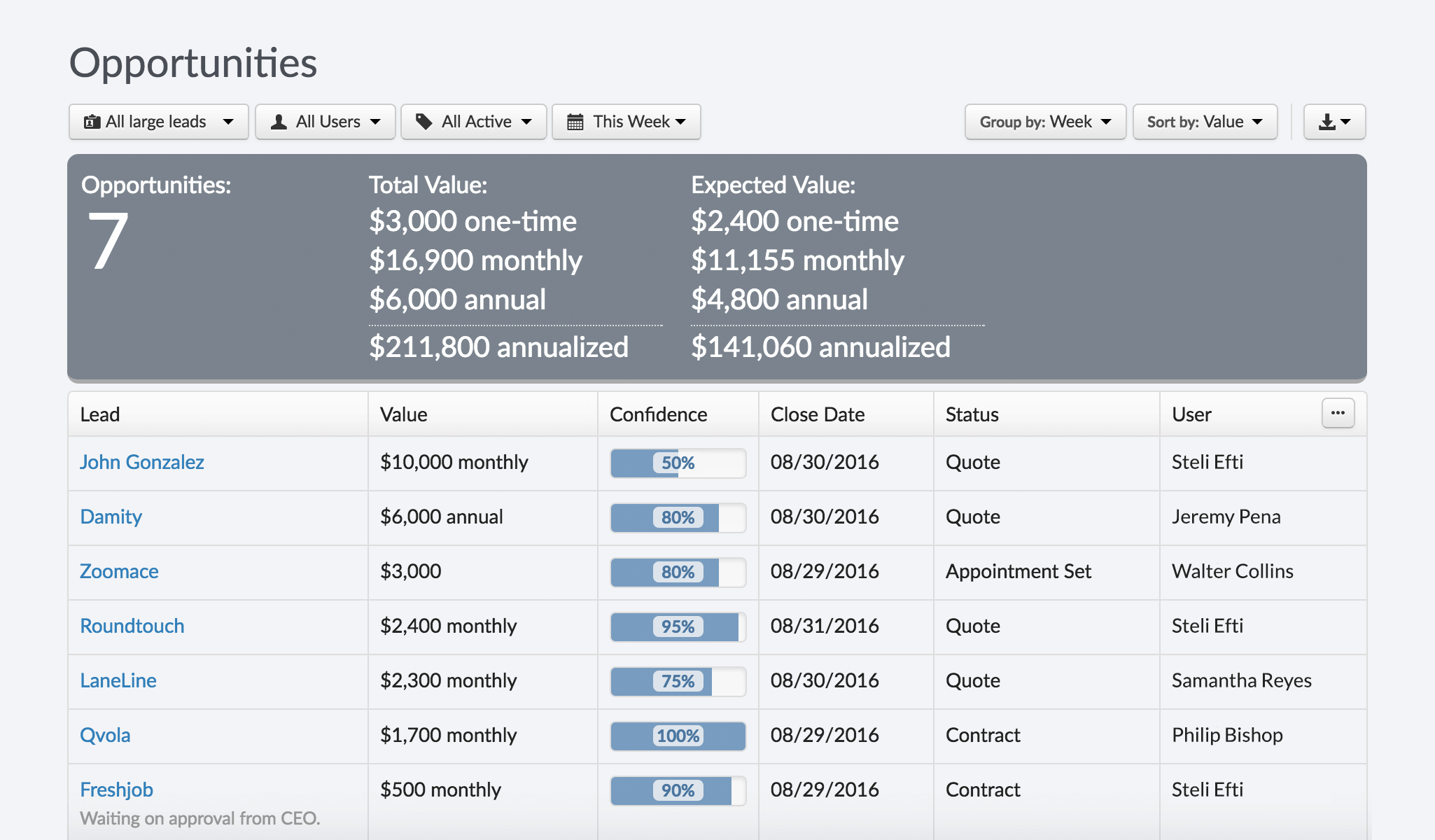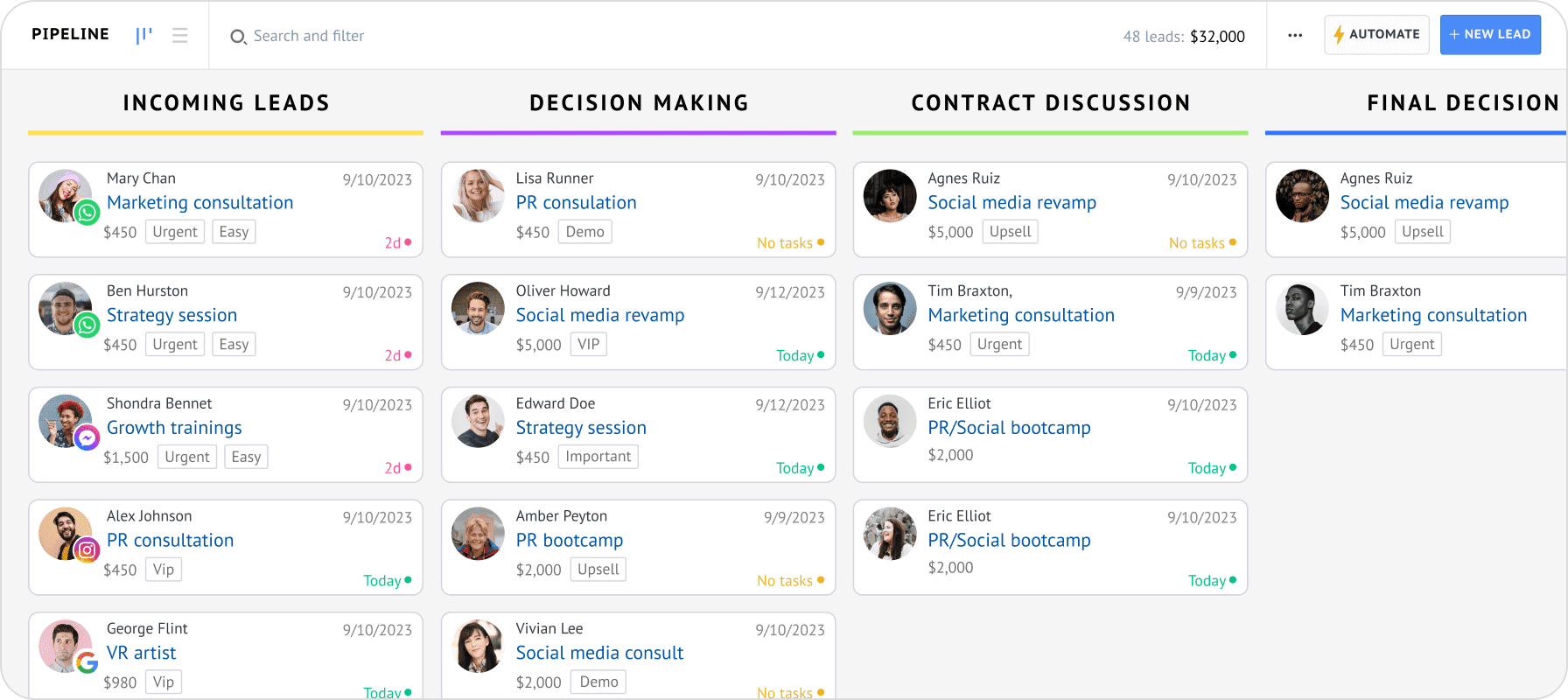
Small Business CRM Selection: Your Ultimate Guide to Finding the Perfect Fit
Choosing the right Customer Relationship Management (CRM) system can feel like navigating a minefield, especially for small businesses. With a plethora of options available, each boasting a unique set of features and benefits, it’s easy to get overwhelmed. But don’t worry, you’re not alone. Many small business owners face this challenge, and with the right approach, you can find a CRM that perfectly aligns with your needs and helps you thrive.
This comprehensive guide will walk you through the essential steps of small business CRM selection. We’ll explore the key considerations, from understanding your specific requirements to evaluating different platforms and ensuring a smooth implementation. By the end of this guide, you’ll be equipped with the knowledge and confidence to make an informed decision and select a CRM that empowers your business to achieve its goals.
Why is a CRM Important for Small Businesses?
Before diving into the selection process, let’s understand why a CRM is so crucial for small businesses. In essence, a CRM is more than just a contact management tool; it’s a central hub for all your customer interactions and data. It helps you:
- Organize and centralize customer information: Say goodbye to scattered spreadsheets and siloed data. A CRM provides a single source of truth for all customer-related information, including contact details, purchase history, communication logs, and more.
- Improve customer relationships: By having a 360-degree view of your customers, you can personalize your interactions, provide better support, and build stronger relationships, leading to increased customer loyalty and retention.
- Streamline sales and marketing efforts: CRMs automate many sales and marketing tasks, such as lead generation, email campaigns, and sales pipeline management, freeing up your team to focus on more strategic initiatives.
- Boost sales and revenue: By optimizing your sales processes, identifying new opportunities, and improving customer engagement, a CRM can significantly contribute to increased sales and revenue growth.
- Enhance data-driven decision-making: CRMs provide valuable insights into customer behavior, sales performance, and marketing effectiveness, enabling you to make informed decisions and optimize your business strategies.
In a nutshell, a CRM empowers small businesses to work smarter, not harder, by streamlining processes, improving customer relationships, and driving revenue growth. It’s an investment that can pay significant dividends in the long run.
Step 1: Define Your Business Needs and Goals
Before you start comparing CRM systems, you need to have a clear understanding of your business needs and goals. This is the foundation upon which your selection will be based. Take the time to assess your current processes, identify pain points, and define your desired outcomes. Consider these questions:
- What are your primary business objectives? Are you focused on increasing sales, improving customer retention, streamlining marketing efforts, or all of the above?
- What are your current challenges? What processes are inefficient or time-consuming? What areas need improvement?
- What features are essential? Make a list of must-have features, such as contact management, sales pipeline management, email marketing integration, reporting and analytics, and customer support ticketing.
- Who will be using the CRM? Consider the needs of each user group, such as sales representatives, marketing professionals, and customer service agents.
- What is your budget? Determine how much you’re willing to spend on a CRM, including initial setup costs, ongoing subscription fees, and any additional expenses.
By answering these questions, you’ll create a detailed profile of your CRM requirements. This will serve as your guide throughout the selection process, helping you identify the systems that best align with your needs.
Step 2: Identify Key Features and Functionality
Once you’ve defined your needs, it’s time to identify the key features and functionality you require in a CRM. Different CRM systems offer different capabilities, so it’s important to prioritize the features that are most critical to your business. Here are some essential features to consider:
- Contact Management: This is the core functionality of any CRM. It allows you to store and manage customer contact information, including names, addresses, phone numbers, email addresses, and other relevant details.
- Sales Pipeline Management: This feature helps you track your sales leads through the sales pipeline, from initial contact to closed deal. It provides a visual representation of your sales process, allowing you to identify bottlenecks and optimize your sales efforts.
- Lead Management: This feature helps you capture, qualify, and nurture leads. It allows you to track lead sources, assign leads to sales representatives, and automate lead follow-up activities.
- Email Marketing Integration: Many CRMs integrate with email marketing platforms, allowing you to send targeted email campaigns, track email performance, and nurture leads through automated workflows.
- Reporting and Analytics: This feature provides valuable insights into your sales performance, marketing effectiveness, and customer behavior. It allows you to generate reports, track key metrics, and make data-driven decisions.
- Customer Support Ticketing: Some CRMs include customer support ticketing systems, which allow you to manage customer inquiries, track support tickets, and provide timely and efficient customer service.
- Integration Capabilities: Consider how well the CRM integrates with other tools you use, such as your website, accounting software, and marketing automation platforms.
- Mobile Accessibility: Does the CRM offer a mobile app or a responsive design that allows your team to access customer information and manage their tasks on the go?
- Automation: Does the CRM offer automation features, such as automated email sequences, task reminders, and workflow automation, to streamline your processes and save time?
Prioritize these features based on your business needs and goals. This will help you narrow down your options and focus on the CRM systems that offer the functionality you require.
Step 3: Research and Evaluate CRM Vendors
With your requirements and feature priorities in hand, it’s time to start researching and evaluating CRM vendors. There are countless CRM systems on the market, ranging from simple, affordable options to comprehensive, enterprise-level platforms. Here’s a step-by-step approach to help you find the right vendor:
- Create a shortlist: Based on your research, create a shortlist of potential CRM vendors that offer the features and functionality you need. Consider factors such as pricing, ease of use, scalability, and customer support.
- Read online reviews and testimonials: Check out online reviews and testimonials from other small businesses to get a sense of each vendor’s reputation and customer satisfaction. Websites like G2, Capterra, and TrustRadius are excellent resources for this.
- Request demos and free trials: Most CRM vendors offer demos and free trials. Take advantage of these opportunities to get a hands-on experience with each system and see how it works in practice.
- Ask for references: Contact the vendors’ references and ask them about their experience with the CRM, including its strengths, weaknesses, and overall value.
- Compare pricing and features: Create a spreadsheet to compare the pricing and features of each CRM on your shortlist. Consider the total cost of ownership, including subscription fees, implementation costs, and any additional expenses.
- Assess ease of use and user experience: The CRM should be easy to learn and use for your team. Consider the user interface, navigation, and overall user experience.
- Evaluate customer support: Make sure the vendor offers reliable customer support, including phone, email, and online resources.
- Consider data security and privacy: Ensure the CRM vendor has robust security measures in place to protect your customer data. Check their privacy policies and compliance certifications.
This thorough evaluation process will help you identify the CRM vendors that are the best fit for your business.
Step 4: Consider Pricing and Implementation Costs
Pricing and implementation costs are crucial factors to consider when selecting a CRM. CRM systems are typically offered on a subscription basis, with pricing varying depending on the features offered, the number of users, and the level of support provided. Here’s a breakdown of the costs to consider:
- Subscription Fees: This is the recurring cost you’ll pay to use the CRM. Pricing models vary, but common options include per-user per-month, per-feature, or tiered pricing based on the number of contacts or data storage.
- Implementation Costs: These costs include the expenses associated with setting up and configuring the CRM, such as data migration, customization, and training. Some vendors offer implementation services, while others provide resources for self-implementation.
- Customization Costs: If you need to customize the CRM to meet your specific business requirements, you may incur additional costs for development, integration, and support.
- Training Costs: Training your team on how to use the CRM is essential for successful adoption. Some vendors offer training programs, while others require you to provide your own training.
- Ongoing Maintenance Costs: Consider any ongoing maintenance costs, such as software updates, technical support, and data storage.
When evaluating pricing, compare the total cost of ownership for each CRM, including all the above factors. Consider your budget and choose a CRM that offers the best value for your money. Don’t just focus on the initial price; consider the long-term costs and the potential return on investment.
Step 5: Plan for Data Migration and Integration
Data migration and integration are critical steps in the CRM implementation process. You’ll need to migrate your existing customer data from spreadsheets, databases, or other systems into the new CRM. You’ll also need to integrate the CRM with other tools you use, such as your website, email marketing platform, and accounting software.
Here’s a guide to help you plan for data migration and integration:
- Data Assessment: Before migrating your data, assess the quality and completeness of your existing data. Identify any errors, duplicates, or missing information.
- Data Cleaning: Clean and standardize your data to ensure consistency and accuracy. Remove duplicates, correct errors, and format your data to meet the CRM’s requirements.
- Data Mapping: Map your existing data fields to the corresponding fields in the new CRM. This ensures that your data is migrated correctly.
- Data Migration Tools: Use data migration tools provided by the CRM vendor or third-party providers to automate the data migration process.
- Testing: Test the data migration process to ensure that all your data is migrated correctly and that the CRM is functioning as expected.
- Integration Planning: Plan how you’ll integrate the CRM with other tools you use. Consider the available integration options, such as native integrations, APIs, and third-party connectors.
- Integration Testing: Test the integrations to ensure that data is flowing correctly between the CRM and other systems.
- Data Backup: Before migrating your data, create a backup of your existing data to protect against data loss.
A well-planned data migration and integration strategy will ensure a smooth transition to your new CRM and maximize its value.
Step 6: Ensure User Adoption and Training
User adoption and training are crucial for the success of your CRM implementation. If your team doesn’t use the CRM effectively, you won’t realize its full potential. Here’s how to ensure user adoption and training:
- Involve your team: Involve your team in the CRM selection process to get their input and feedback. This will increase their buy-in and make them more likely to use the CRM.
- Provide comprehensive training: Provide comprehensive training to your team on how to use the CRM, including its features, functionality, and best practices.
- Create training materials: Create training materials, such as user manuals, video tutorials, and FAQs, to help your team learn and use the CRM effectively.
- Offer ongoing support: Offer ongoing support to your team, including technical support, user forums, and online resources.
- Encourage user feedback: Encourage your team to provide feedback on the CRM and identify areas for improvement.
- Measure user adoption: Track user adoption rates and identify any areas where users are struggling.
- Celebrate successes: Recognize and reward users who are actively using the CRM and achieving positive results.
- Provide ongoing coaching and support: Don’t just train and leave them; offer ongoing coaching and support to help your team maximize the value of the CRM.
By investing in user adoption and training, you’ll empower your team to use the CRM effectively and achieve your business goals.
Step 7: Monitor, Evaluate, and Optimize
The CRM implementation process doesn’t end after the initial setup and training. It’s an ongoing process that requires monitoring, evaluation, and optimization. Here’s how to monitor, evaluate, and optimize your CRM:
- Monitor key metrics: Track key metrics, such as sales performance, customer retention, and marketing effectiveness, to measure the success of your CRM implementation.
- Evaluate user adoption: Monitor user adoption rates and identify any areas where users are struggling.
- Gather user feedback: Gather feedback from your team on their experience with the CRM.
- Identify areas for improvement: Identify areas where the CRM can be improved, such as streamlining processes, adding new features, or improving user training.
- Make adjustments: Make adjustments to the CRM configuration, user training, or processes based on your findings.
- Regularly review and refine your CRM strategy: Ensure your CRM strategy aligns with your evolving business needs and goals.
- Stay informed about new features and updates: CRM vendors regularly release new features and updates. Stay informed about these updates and take advantage of them to maximize the value of your CRM.
By continuously monitoring, evaluating, and optimizing your CRM, you can ensure that it remains a valuable asset for your business.
Top CRM Systems for Small Businesses
Here are some of the top CRM systems for small businesses, categorized by their strengths:
- HubSpot CRM: Known for its user-friendliness, free version, and comprehensive features, making it an excellent choice for businesses of all sizes.
- Zoho CRM: Offers a wide range of features, customization options, and integrations at a competitive price point.
- Pipedrive: Designed specifically for sales teams, with a focus on pipeline management and deal tracking.
- Freshsales: A user-friendly CRM with a focus on sales automation and lead management.
- Salesforce Essentials: A more affordable and streamlined version of Salesforce, designed for small businesses.
- Insightly: Known for its project management capabilities and integration with Google Workspace.
- Agile CRM: An all-in-one CRM with marketing automation, sales, and customer service features.
Remember to research each of these options and compare them based on your specific needs and requirements.
Conclusion: Selecting the Right CRM for Your Small Business
Selecting the right CRM for your small business is a significant decision that can have a profound impact on your success. By following the steps outlined in this guide – defining your needs, identifying key features, researching vendors, considering costs, planning for data migration, ensuring user adoption, and continuously monitoring and optimizing – you can choose a CRM that empowers your business to achieve its goals.
Take your time, do your research, and don’t be afraid to ask questions. The right CRM will not only streamline your processes and improve customer relationships but also drive sales, increase revenue, and enable data-driven decision-making. It’s an investment that can pay off handsomely in the long run. Good luck with your CRM selection!


